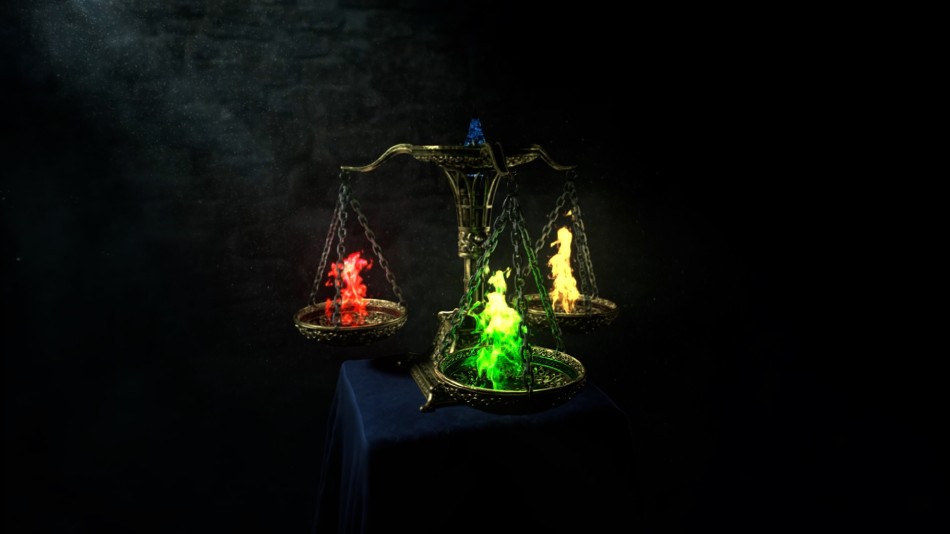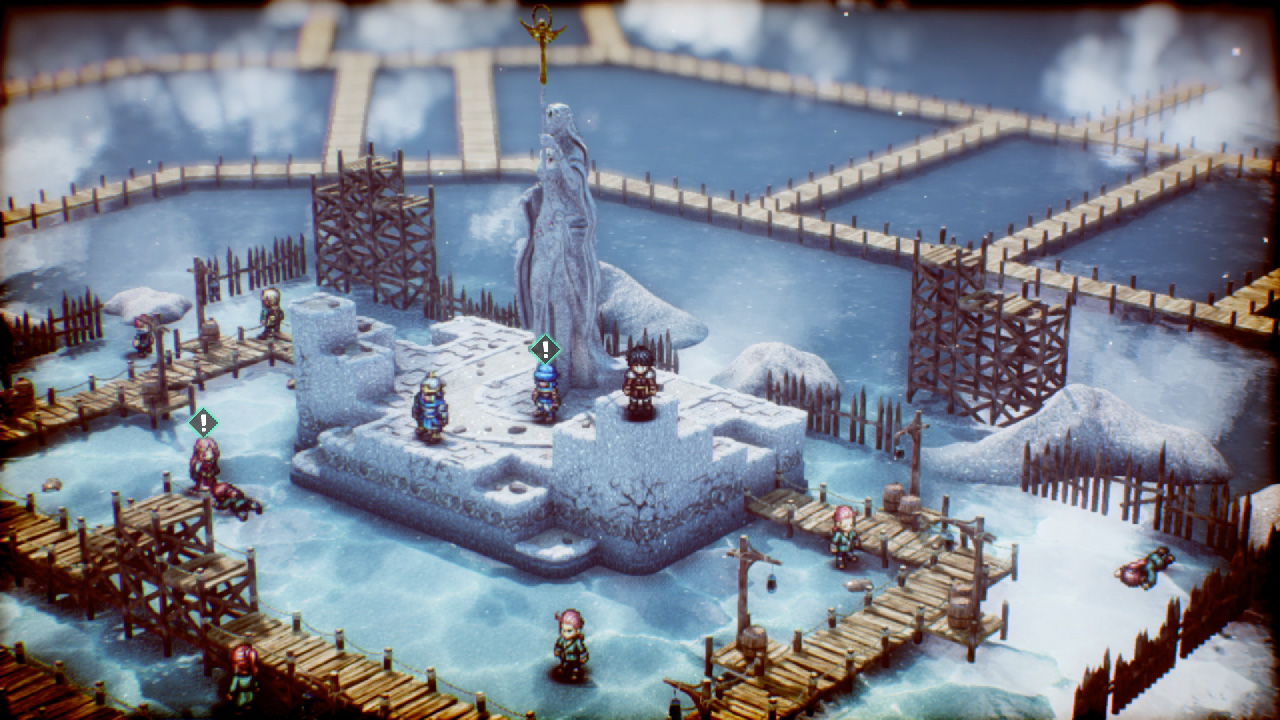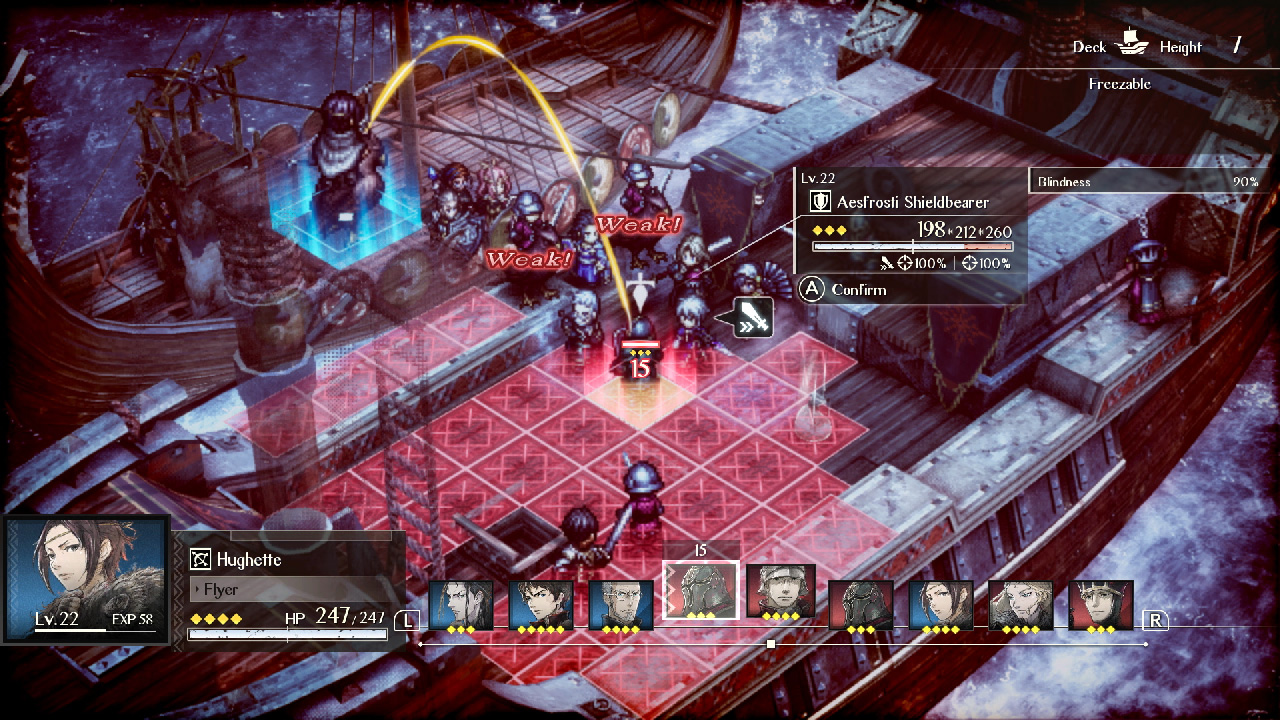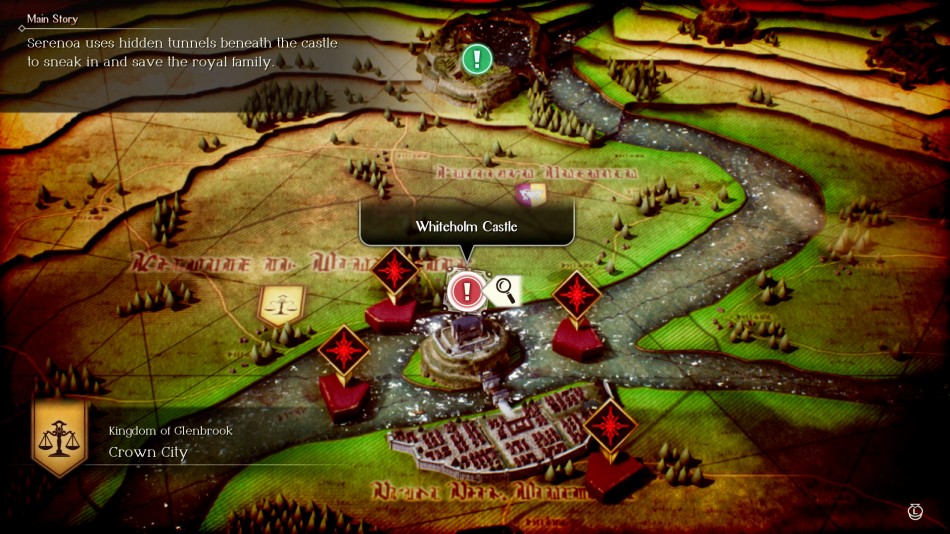Not quite congruent, but complete.
There came a point during my time with Triangle Strategy when I wondered if it was Square Enix’s apology for Octopath Traveler. Not that they need to apologize, mind you; I quite liked that game. However, I know from numerous conversations with JRPG fans that many were put off by its lack of a driving narrative and cohesive story arc.
Triangle Strategy, you see, is all about that story arc. It presents us with a wonderful tale of political intrigue punctuated by numerous characters who either push it along or are pushed by it.
At the heart of the narrative is a precarious truce between the Norzelian nations of Aesfrost, Glenbrook, and Hyzante. Part of this truce is a joint mining expedition meant to ease the nations’ demand for salt. Before the project can be completed, however, Aesfrost invades Glenbrook and kills their king. Their nefarious motivations are clear (to the player, anyway), but that doesn’t mean you’ve got a clear path forward. The central character, Serenoa (Lord of House Wolfort, which is part of Glenbrook) must decide how to progress based on what’s best for your House, and that’s not always easy to discern.
It’s also not entirely about Serenoa. Seven of the numerous other characters remain central to the story, and they serve as your strategists. Triangle Strategy pushes you down a definite path, but there are many times when that path splits into multiple options. Sometimes, the decision will be easy for you to make. Other times, the right choice is not nearly as clear…especially when a favorite character feels differently from you.
Your party approaches each vote at the Scales of Conviction with their decisions made, but that doesn’t mean they can’t be swayed. If there’s a specific route you want to take, it’s up to you to uncover details that can be used to sway those who aren’t leaning your way. This information is obtained by scouting locations for documents and speaking with your army and the local citizens. You often can only tip the scales your way if you’ve found the right info, so you’re rewarded for full exploration.
Kind of. Because if you don’t find the information you need, the game still goes on. No matter which route you take, the paths always convene, so it’s just another way to get from point A to point B. This is both good and bad. It’s good in that it takes some of the weight off your shoulders, so Triangle Strategy never really becomes a stressful affair. It’s bad in that you’ll spend a lot of time reading and exploring when you really don’t have to. The game could just push you down the default paths and you’d be just fine.
For some, that may be the way to go. There is a lot of exposition in this game. There’s even more if you want to explore the lore delivered through various documents you can require. Pacing can and will become an issue by that alone, but the narrative is also slowed down by what are essentially practice missions.
Should I cover this before I get to combat? I guess I will, if only to make a point about how combat really doesn’t take center stage in Triangle Strategy. Between the main chapter levels, you’re given the option to hone your skills in numerous and diverse practice sessions. Characters gain experience via direct use, so this is a great way to level them up. You’ll also get various materials for upgrading specific skills, so these missions are quite important. In fact, they’re often too important, requiring you to play them more than once. This brings the story to a crawl, killing your incentive to push forward. Staring at the screen before each mission, wondering if I’ve leveled up enough to take it on, isn’t fun.
Thankfully, Square Enix does something really cool here by allowing you to keep the experience you’ve acquired in a level even if you have to retreat. You’ll lose any items you pick up, but that experience gain may be all you need to advance when you start over.
If you’re still reading this review and wondering about combat, then maybe you’re patient enough to wait for it in the game, too. Fights are handled on an isometric grid with the usual bonuses. Height is important. So is attacking your enemy from behind. Because each character has his/her own strengths and weaknesses, going in with the right team is important. Have one character cast an ice spell to damage one or more enemies, then another can follow it up with a fire spell to melt the ice into water. Now, cast a thunder spell for extra damage to everyone standing in a puddle of water. Enemies and allies alike will act in turn, so you’ll need to pay attention to make sure you can time this accordingly.
Character abilities go well beyond your standard spells, too. Sure, you’ve got one who excels at buffs, one at healing, and so on, but you’ve also got one who can build ladders for quicker access to hard-to-reach areas. One can cast a decoy of herself to draw enemy fire. One is able to toss healing items to people out of reach. These special abilities have cool down times so you can’t use them on every turn, so utilization and positioning are very important. Everyone is useful in a way, and deciding who to take into a fight is often a very difficult decision. You’ll surely have your favorites, but they’re not always the best to take along. Also, materials for leveling up their abilities are simultaneously rare and expensive, so you can’t keep everyone at the top of their game. You can either spread the resources out for everyone, or focus on a few to have tanks on the battlefield.
There’s plenty more to consider as you play, and turn-based strategy fans will love to master the intricacies of combat. To move things along, however, I want to the game’s visuals. I’m not as attached to the 2D-HD look as are some. The whole thing looks clunky to me, just with nicer lighting. Also, the characters never really feel like they’re a part of the environment; it’s more like they’re just bouncing on top of it. I’m not necessarily opposed to the whole retro visual approach (it’s not likely to go away any time soon), it’s just that I’ve seen it look better…or at least more cohesive. Others will disagree, and I’ll let them have that.
Besides, it doesn’t take away from what is a very enjoyable game, provided you’re not just in it for the combat. There’s a lot to take in, and the developers didn’t rush any of it. To their credit, they even made plenty of it optional. On the overhead map, selecting red exclamation marks advances the story. Green ones are there only if you want to take the time to see what’s going on behind the scenes. I can’t imagine there’s anyone out there who’d skip them, but you’re free to do so.
And honestly, I’d rather have too much narrative tying things together than to be adventuring for no real reason. The story is complex, the characters are likable, and there’s plenty of variety in the combat missions and in the soldiers you’ll use to complete them. Triangle Strategy will keep you occupied for a long time if you let it. Just be prepared to walk away to prevent repeated training missions from getting on your nerves.
Maybe you can walk right back to Octopath Traveler.
Review: Triangle Strategy (Nintendo Switch)
Very Good
Triangle Strategy pushes heavily into its narrative, perhaps to the detriment of its turn-based combat. That will turn some away. But for those who are willing to push through, you’ll find the game worth (nearly) every second you put into it. Excellent level design, diverse character abilities, and a tense political climate generate an engrossing experience for JRPG fans.






